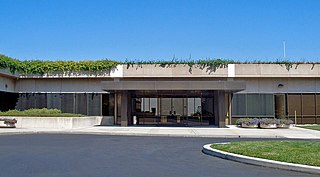
PARC is a research and development company in Palo Alto, California. Founded in 1969 by Jacob E. "Jack" Goldman, Xerox Corporation's chief scientist, the company was originally a division of Xerox, tasked with creating computer technology-related products and hardware systems.
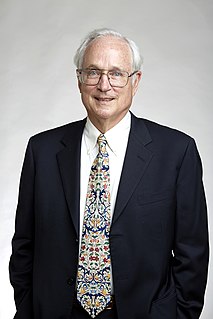
Butler W. Lampson, ForMemRS, is an American computer scientist best known for his contributions to the development and implementation of distributed personal computing.
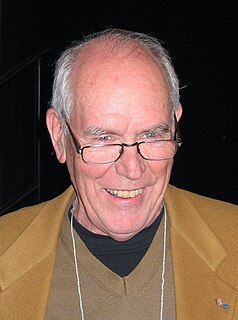
Ivan Edward Sutherland is an American computer scientist and Internet pioneer, widely regarded as a pioneer of computer graphics. His early work in computer graphics as well as his teaching with David C. Evans in that subject at the University of Utah in the 1970s was pioneering in the field. Sutherland, Evans, and their students from that era developed several foundations of modern computer graphics. He received the Turing Award from the Association for Computing Machinery in 1988 for the invention of Sketchpad, an early predecessor to the sort of graphical user interface that has become ubiquitous in personal computers. He is a member of the National Academy of Engineering, as well as the National Academy of Sciences among many other major awards. In 2012 he was awarded the Kyoto Prize in Advanced Technology for "pioneering achievements in the development of computer graphics and interactive interfaces".

William Robert Sutherland was an American computer scientist who was the longtime manager of three prominent research laboratories, including Sun Microsystems Laboratories (1992–1998), the Systems Science Laboratory at Xerox PARC (1975–1981), and the Computer Science Division of Bolt, Beranek and Newman, Inc. which helped develop the ARPANET.

Robert William Taylor, known as Bob Taylor, was an American Internet pioneer, who led teams that made major contributions to the personal computer, and other related technologies. He was director of ARPA's Information Processing Techniques Office from 1965 through 1969, founder and later manager of Xerox PARC's Computer Science Laboratory from 1970 through 1983, and founder and manager of Digital Equipment Corporation's Systems Research Center until 1996.

Maze, later expanded and renamed to Maze War, is a 3D networked first-person shooter maze game originally developed by Steve Colley, Greg Thompson, and Howard Palmer for the Imlac PDS-1 computer. It was largely developed between the summer of 1972 and fall of 1973, at which point it included shooter elements and soon after was playable over ARPANET between multiple universities. It is considered the earliest first-person shooter; ambiguity over its development timeline has led it to be considered, along with Spasim, to be one of the "joint ancestors" of the genre.

Robert Drost is an American computer scientist. He was born in 1970 in New York City.

Daniel Henry Holmes Ingalls Jr. is a pioneer of object-oriented computer programming and the principal architect, designer and implementer of five generations of Smalltalk environments. He designed the bytecoded virtual machine that made Smalltalk practical in 1976. He also invented bit blit, the general-purpose graphical operation that underlies most bitmap computer graphics systems today, and pop-up menus. He designed the generalizations of BitBlt to arbitrary color depth, with built-in scaling, rotation, and anti-aliasing. He made major contributions to the Squeak version of Smalltalk, including the original concept of a Smalltalk written in itself and made portable and efficient by a Smalltalk-to-C translator.

Charles Patrick "Chuck" Thacker was an American pioneer computer designer. He designed the Xerox Alto, which is the first computer that used a mouse-driven graphical user interface (GUI).
While according to Ivan Sutherland, the The Sword of Damocles actually was the name for the mechanical tracking system and not the actual HMD, which was just called "the head-mounted display system", it is widely considered to be the first augmented reality head-mounted display (HMD) system, although Morton Heilig had already created a similar apparatus earlier, which got patented in 1960. The Sword of Damocles was created in 1968 by computer scientist Ivan Sutherland with the help of his students Bob Sproull, Quintin Foster, and Danny Cohen. Before he began working toward what he termed "the ultimate display", Ivan Sutherland was already well respected for his accomplishments in computer graphics. At MIT's Lincoln Laboratory beginning in 1966, Sutherland and his colleagues performed what are widely believed to be the first experiments with head-mounted displays of different kinds.
Oracle Labs is a research and development branch of Oracle Corporation. The labs were created when Oracle acquired Sun Microsystems. Sun Labs was established in 1990 by Ivan Sutherland and Robert Sproull. The initial locations were in Menlo Park, California and Burlington, Massachusetts, United States.
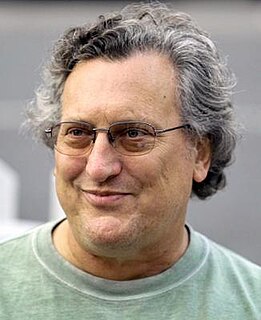
Richard Francis Lyon is an American inventor, scientist, and engineer. He is one of the two people who independently invented the first optical mouse devices in late 1980. He has worked in many aspects of signal processing and was a co-founder of Foveon, Inc., a digital camera and image sensor company.
James David Foley is an American computer scientist and computer graphics researcher. He is a Professor Emeritus and held the Stephen Fleming Chair in Telecommunications in the School of Interactive Computing at Georgia Institute of Technology. He was Interim Dean of Georgia Tech's College of Computing from 2008–2010. He is perhaps best known as the co-author of several widely used textbooks in the field of computer graphics, of which over 400,000 copies are in print and translated in ten languages. Foley most recently conducted research in instructional technologies and distance education.
Ronald Baecker is an Emeritus Professor of Computer Science and Bell Chair in Human-Computer Interaction at the University of Toronto. He was the co-founder of the Dynamic Graphics Project, and is the founder of the Knowledge Media Design Institute (KMDI) and the Technologies for Aging Gracefully Lab (TAGlab). He is the author of Computers and Society: Modern Perspectives, published by Oxford University Press in 2019.
James George "Jim" Mitchell is a Canadian computer scientist. He has worked on programming language design and implementation, interactive programming systems, dynamic interpretation and compilation, document preparation systems, user interface design, distributed transactional file systems, and distributed, object-oriented operating systems. He has also worked on the design of hardware for computer graphics, high-level language execution, and audio input/output.
The SUN workstation was a modular computer system designed at Stanford University in the early 1980s. It became the seed technology for many commercial products, including the original workstations from Sun Microsystems.

Danny Cohen was an Israeli American computer scientist specializing in computer networking. He was involved in the ARPAnet project and helped develop various fundamental applications for the Internet. Cohen is probably best known for his 1980 paper "On Holy Wars and a Plea for Peace" which adopted the terminology of endianness for computing. Cohen served on the computer science faculty at several universities and worked in the private industry.

William Maxwell Newman was a British computer scientist. With others at the Xerox Palo Alto Research Center in the 1970s Newman demonstrated the advantages of the raster display technology first deployed in the Xerox Alto personal workstation, developing interactive programs for producing illustrations and drawings. With Bob Sproull he co-authored the first major textbook on interactive computer graphics.
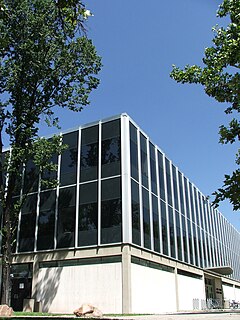
The School of Computing is a school within the College of Engineering at the University of Utah in Salt Lake City, Utah.













